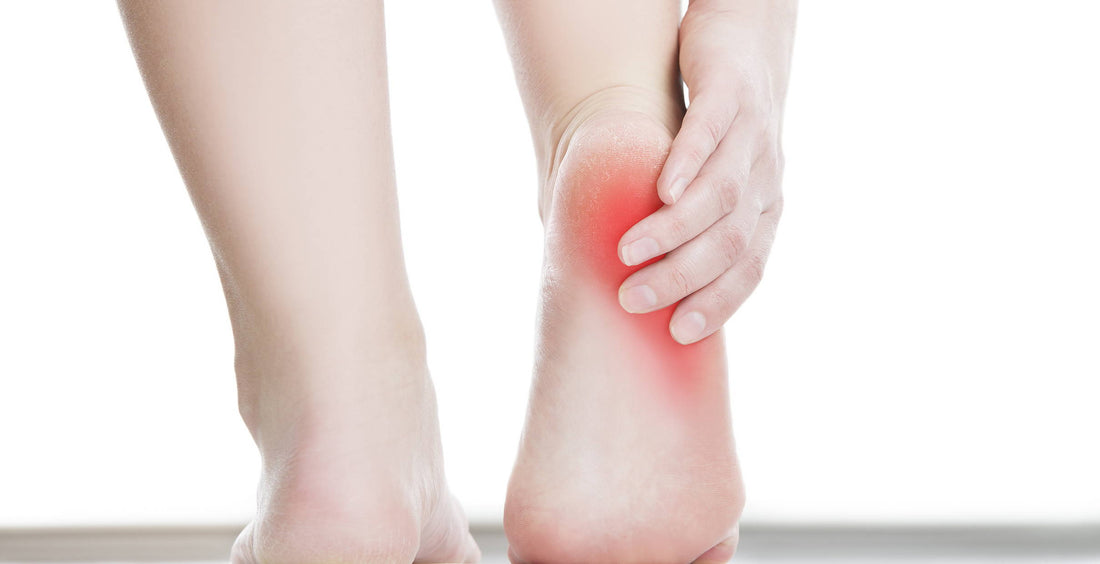A plantar fasciitis injury is one of the most annoying setbacks a runner can suffer. It can take a long time to heal, and sometimes feels like it gets worse before it gets better.
But how do you know when it's actually getting worse?
1. The pain does not fade during the day
A hallmark of plantar fasciitis is that it’s worst in the morning. Typically, after some use, the pain lessens. However, if your pain doesn’t ease up and stays very painful throughout the day, your plantar fasciitis is probably getting worse.
2. The pain increases over time
If it’s actually getting so bad that you can’t stand putting pressure on your heels, it’s definitely not getting better.
3. The pain begins to affect your feet in new places
Plantar fasciitis pain is usually confined to the heel. It may be getting worse if the pain starts to spread into the arches of your feet as well.
4. Your knees start to hurt
If your feet are constantly painful to walk on, it’s likely that your gait will change as a result. This will put new pressure on your knees, causing them to also ache.
5. Your hips and lower back start to hurt
If your gait is off, and your knees are out, then it’s likely that the dysfunction will refer upwards to your hips and lower back too. If you don’t address the root of the problem (the plantar fasciitis) quickly, this can cause serious problems down the line.
We recommend using Enertor insoles to start healing your plantar fasiitis today. Clinically proven to relieve pain in 91% of people and even heal plantar fasiciits in 69% of people, try them risk-free on their 60 day satisfaction guarentee to see if they work for you.
Does walking make plantar fasciitis worse?
Anyone who has been recently diagnosed with plantar fasciitis should initially minimise time spent on their feet. However, after approximately one to two weeks you should be able to start walking more again.
Can I treat heel pain through walking?
Walking in small doses should actually help heal your plantar fasciitis. It provides the stretches necessary to increase flexibility and reduce pain.
However it is important to wear supportive insoles to support your healing. Enertor insoles are the only insoles proven to help heal plantar fasciitis, and should help you get back on your feet again.
Proven treatment - insoles
Enertor insoles are the only insoles proven to help eliminate plantar fasciitis. In a 2017 clinical study, 91% of plantar fasciitis sufferers reported having reduced pain after wearing them with 75% rerporting the insoles helped relieved their symptoms completely.
Their insoles work by absorbing 51% of the impact of walking or running, giving your feet the cushioning and support it needs to heal.
Start your 60 day free trial today and start walking again pain-free.
Dealing with plantar fasciitis
To find out more about plantar fasciitis and how Enertor Insoles can help reduce its symptoms, visit our plantar fasciitis injury page, or register your email to receive a free guide (below). If your plantar fasciitis is showing no signs of getting better, shop online and buy Enertor insoles which can help reduce pain from your plantar fasciitis injury today.
Sign up for our FREE plantar fasciitis guide below
The post 5 signs your plantar fasciitis injury is getting worse appeared first on Enertor. Whilst Enertor has over 18 years Orthotics experience, our blog content is provided for informational purposes only and it is not a substitute for your own doctor’s medical advice. Enertor advises anyone with an injury to seek their own medical advice – and do not make any health or medical related decisions based solely on information found on this site.


